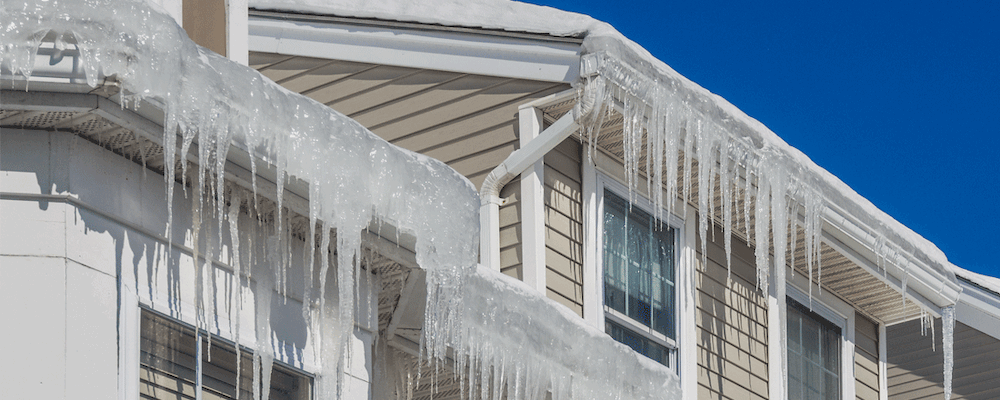
The experts of a leading roof construction company recommend making sure your attic is adequately insulated and ventilated to help prevent the formation of ice dams in the first place.
Table of Contents
Attic Ventilation
One of the primary causes of rooftop snowmelt is improper attic ventilation. The ideal is for the attic temperature to be the same as the exterior temperature.
What Results In An Elevated Attic Temperature?
Both air leakage through the ceiling and minimal or insufficient insulation can contribute to elevated attic temperatures. Properly located ventilation with sufficient net free area can help direct the warmed air away from the attic minimizing snowmelt.
What Is A Sufficient Net Free Area?
Attics are supposed to have properly sized intake and exhaust vents positioned to provide balanced airflow. Vent sizes are expressed in net free vent area (NFVA) which accounts for any grilles, or filters to provide you with the actual open area for airflow for each vent.
Why Is Insufficient Or Lack Of Attic Ventilation A Problem?
Insufficient ventilation that allows the attic to get warm can cause snow to melt and equally as important, a lack of ventilation can allow condensation to form on the interior side of the roof deck leading to wood rot and potential for mold growth.
How Can I Make Sure My Attic Is Properly Ventilated?

According to experienced Mobile roofing contractors, there are a lot of ways to properly ventilate your attic, including a balanced soffit and ridge vent system is recommended, but other options can provide proper ventilation as well/
Pro Tip – The specialists at Southern Roofing Systems have a wonderful tool to help you see if your home has an adequate amount of roof ventilation and to determine the amount of ventilation you need. They can get you acquainted with the most promising ways to improve your ventilation.
Attic Insulation
With proper insulation levels and by air sealing the ceiling, you can help keep heat from your living spaces out of the attic:
- Place or install at least code minimum R-value fiberglass batt or loose-fill insulation in the attic. This can significantly reduce the heat moving from the living space to the attic.
- Using baffles at the soffits will keep the insulation out of the ventilation path.
Ice and water barriers are:
- Self-sealing, preventing water infiltration around nails
- Waterproof, providing an added protection to valleys and roof openings
- Self-adhesive, allowing no space for water migration
Ice and water barriers are also installation-friendly, offering a slip-resistant surface to workers and suitable for cold weather applications.
The Bottom Line – Roofing systems are constructed to direct the flow of water away from the surface of the roof and the foundation of the home. However, elements of Mother Nature, in the form of rain and snow, do their best to interfere with this process. Prevention strategies include adequate insulation and ventilation and installing an ice and water barrier beneath the shingles – directly on the roof decking.
Southern Roofing Systems offers specialized metal roofing services to help make sure your roof is built to last!
